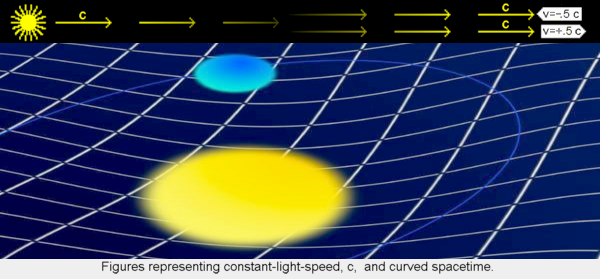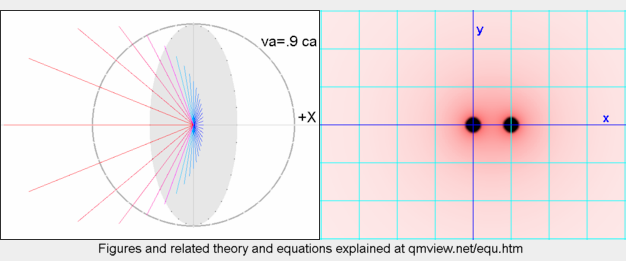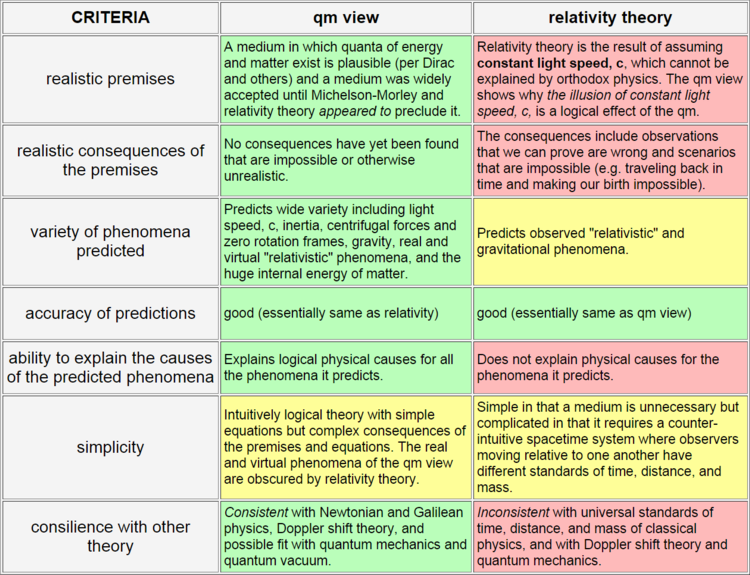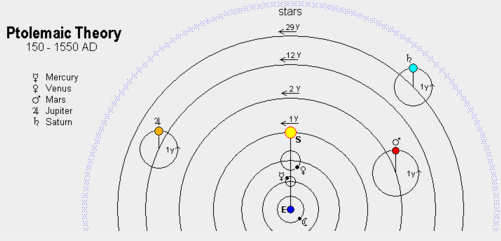|
|
Harmonies of Illusions, past and present
The following has a bearing on the advancement of science and the advancement of human awareness in general.
It is intended for people interested in this advancement and it suggests a way they can help.
The advancement of science has often been impeded by "harmonies of illusions," to borrow a descriptive term from
Ludwick Fleck (1896 –1961), author of Genesis and Development of a Scientific Fact. When
we use this term it will mean the combination of complementary assumptions, illusions and related evidence to
create a scientific, religious, political, or other system of belief.
Some may think that science avoids illusions because scientific thinking is based on verifiable evidence and
is always open to questioning and is subject to change due to new evidence and new thinking.
In reality, new concepts and theories usually encounter skepticism and resistance, rather than open-minded
curiosity and willingness to understand the concepts prior to judging them.
Popular scientific beliefs and theory tend to become entrenched and protected from new evidence and thinking,
much like other systems of beliefs. We will be discussing past and present examples.
We will describe one of the many historical harmonies of illusions that was eventually replaced by theory that
is free of the illusions. Then we will describe what we will show is a modern harmony of illusions,
and will explain briefly the causes of the illusions. Lastly, we will briefly describe a recent theory, the
quantum medium view (qm view), that does not contain the illusions and has other characteristics that
make it a more plausible harmony or interpretation of the evidence. Other pages on this website explain the
qm view in detail.
Ancient harmony of illusions
Ptolemy's geocentric model or theory of the cosmos is a classic example of how harmonious illusions and
evidence can cause intelligent and knowledgeable people to accept fundamentally flawed beliefs about our
universe. This theory prevailed for over a millennium due to the following illusions and evidence.
 |
Heavenly bodies move around Earth.
Reason: Verifiable observations show that sun, moon, planets, and stars move in precise, mathematically predictable,
paths around Earth) |
 |
Heavenly matter has no weight and tends to move in circular paths in the heavens.
Reason: Observations and reason show that heavenly matter is light and does not fall to Earth.
|
 |
Earthly matter, unlike heavenly matter, tends to fall to Earth and stay on Earth.
Reason: Observed fact endorsed by Aristotle |
 |
Earth is at the center of the universe.
Reason: Observations support this view, and religious documents and beliefs say Earth is at center
of universe. |
 |
Ptolemaic theory is an accurate representation of reality.
Reason: It agrees with the observed phenomena and accurately predicts eclipses and other
celestial events. It was created and believed by intelligent people, so it is probably correct.
|
Gradually, new theory and experimental evidence provided by Copernicus, Galileo, Kepler, Newton and others
led to our current heliocentric theory of the solar system within a much larger and more complex cosmos.
Observations that were mysterious in the past and led to simple, imagined causes were found to
have more complex, logical physical causes.
Humanity's experience with Ptolemaic theory shows the following.
A theory's agreement with observations and its ability to predict phenomena, and the fact that it
is widely accepted by intelligent people do not necessarily mean the theory is correct.
This fact is ignored by people who are certain that the physics law of constant light speed, c, is correct.
Today this law has withstood the "test of time" and is widely taught and accepted without question. This
law, which became part of orthodox physics theory around 1900, means that the speeds of photons relative
to all bodies having constant velocity motion relative to one another in the vacuum of remote space is
always the same speed, c. Although this seems impossible, and modern orthodox physics theory cannot explain
why it is possible, most physicists accept the law due to their belief that verifiable experimental
evidence proves that this speed of light, c, is constant. The law is responsible for the following
complex harmony of illusions and evidence that has prevailed for the past 100 years.
Modern harmony of illusions and evidence?
 |
 |
The speed of light, c, through a vacuum is always the same
relative to all sources and observers.
Reason: Extensive experimental evidence shows that the measured speed of light and other
electromagnetic radiation is always consistent with the in-vacuum speed, c = 299,792,458 m/s. |
 |
Light is not propagated through a medium and a medium is unnecessary.
Reason: If light were propagated through a medium, the experiments of Michelson and many others
would have been able to detect this medium. |
 |
Relativity theory is a logically sound theory.
Reason: Relativity theory is a logical consequence of a law of nature (constant light speed, c),
which has been confirmed many times.
|
 |
Relativity theory has been proven to be correct.
Reason: A huge body of experimental and other empirical evidence is in agreement with the predictions
of relativity theory.
|
 |
The paradoxes of relativity theory do not affect the viability of the theory.
Reason: Many experts have explained various reasons why the apparent paradoxes of
relativity theory are not paradoxes.
|
 |
Relativity theory has been an exceptionally good physics theory.
Reason: It led to the discovery of important new facts about nature. For example, it
revealed the fact that a huge amount of energy is contained in small masses of matter in accordance with
e=m·c2, and it revealed the correlation between
the velocity of a body (e.g. gold nucleus) relative to an observer and the observed mass of the
body. It showed that Newton's laws of motion are only accurate at low speeds.
|
 |
Relativity theory revealed that nature is fundamentally different from what physicists
previously thought. It shows that we live in a spacetime universe with no universal standards
of time or distance or mass; time does not advance at the same steady pace everywhere in the
universe; the universe has no particular size and mass/energy at any particular time; all times,
distances, and masses are "relative," and the observations in any inertial reference frame are equally as good
as the observations in any other inertial frame.
Reason: This picture of nature is the logical result of relativity theory. This picture
has been successful in predicting and explaining relativistic phenomena having many important, practical
uses, which helped advance science and technology.
|
Note: It will become apparent that relativity theory's explanation of relativistic phenomena is an
incorrect explanation that resulted in incorrect ideas concerning fundamental aspects of nature:
distance, time, and mass/energy. For example, it will be apparent why relativity theory results
in the incorrect idea that "relative motion" causes observers in inertial frames having relative motion
to disagree on their standards of distance, time, and mass/energy.
The causes of constant light speed, c, and other perplexing phenomena mentioned above are thoroughly
explained by the quantum medium view. The speed of light relative to measuring apparatus appears
to be constant because light speed, c, is determined via time-keeping and distance-measuring
instruments that are constantly changing their physical characteristics and units of time and distance
due to their constantly changing absolute velocities and resulting internal energy-exchange rates as
Earth rotates and revolves around the sun. Remarkably, the times and distances determined by the
apparatus always result in the same observed, virtual speed of light, c. This is
demonstrated mathematically, and it is part of the strong evidence supporting the qm view.
To our knowledge, the qm view is the only plausible explanation for constant light speed, c.
The quantum medium view harmony of assumptions and evidence

The qm view, which is explained in detail at the qmview.net website, is based on the following
harmony of assumptions and evidence. It seems to be free from illusions because the view is self-consistent,
consistent with the experimental evidence, consistent with the logic of classical physics, and it explains
physical causes for a wide range of perplexing phenomena that have not had plausible explanations. To date,
no one has identified a paradox or other flaw in the qm view, and after years of investigation the
view appears sound. The website's "Challenge" page is to encourage searching for a flaw.
 |
All mass/energy (including all "particles" with and without
rest mass) is comprised of oscillations or systems of oscillations of a quantum medium that pervades our
universe. The unimpeded, absolute, maximum speed of the oscillations through the medium is a
constant, ca.
Reason: The logical consequences of this premise explain a wide variety of phenomena for which the
physical causes have not been apparent. Among these phenomena are the observed constant speed of
light, c, through all inertial reference frames, Doppler shifts of light, matter's huge internal energy, the
inertia of matter, and the observed gravitational attraction between masses, which affect one another via
their effects on the medium.
|
 |
The qm view is a logical theory that shows why relativity
theory can make accurate predictions of observed phenomena and appear to explain the phenomena, while at the same
time be paradoxical, counterintuitive, and misleading.
Reason: The qm view is based on a light-propagating medium that physicists have long thought was logical,
and it shows why the light-speed-c premise, on which orthodox theory is based, is flawed as well as illogical.
It
explains the paradoxes of relativity.
The quantum medium provides a plausible basis for the mass/energy of photons and other particles of the
standard model and for hypothesized dark matter or dark energy. And it provides a plausible explanation
for the observed motions of photons through the cosmos. Its assumption that energy quanta are oscillations in
the qm provides a plausible basis for quanta sometimes behaving like waves and sometimes like particles.
|
 |
The qm view is supported by the same body of evidence
that supports relativity theory.
Reason: The qm view predicts exactly the same observed phenomena predicted by relativity theory
(except slightly lower extreme gravities and black holes without singularities). In addition to
predicting the observed, virtual phenomena, it also specifies the absolute phenomena occurring in the qm that
cause the virtual phenomena.
|
 |
Every time an experiment is conducted to measure the speed of
light from a star or other source, and the observed speed is c, this is evidence of the qm.
Reason: The qm view provides the only plausible explanation for this experimental result being
independent of the velocity of the measuring apparatus. And anyone who clearly understands why a qm
always causes the virtual, observed speed of any light pulse through an observer's reference frame to be c
(due to the particular combination of 1. the real, absolute relative velocity of the pulse
through the observer's frame, 2. the clock synchronization distortion due to assuming
light speed, c, 3. the clock rate distortion, and 4. the distance
distortion in the observer's frame) will realize that the chance of this combination of factors not
being the cause of light speed, c, is small. If it is not the cause, then it is an unlikely
coincidence, as are the qm view's logical explanations for a wide variety of other perplexing phenomena.
|
 |
The qm view has other characteristics of a good theory.
Reason: These characteristics, which are generally considered desirable, are shown in the following
table where the characteristics of the qm view and relativity theory are compared.
|
| |

|
This website describes the qm view in detail. There should be no ambiguity or confusion about what this
theory specifies. However, even if you are a physicist who is willing to consider thinking that departs from
orthodox thinking, it will take considerable time to understand the qm view because it has premises that require
a variety of new terms and ways of thinking that must be kept in mind for the view to make sense to you. For
example, you must understand completely the terms/symbols/concepts for "absolute velocity, va," and "physical
change ratios, rv and rg" (including the reasons for, and implications of, these variables). You
need to be able to convert back and forth between virtual and absolute phenomena. There is a lot to
understand and remember in order to have a good, clear understanding of the qm view.
We have looked carefully for an illusion or flaw in the qm view, and others have also searched and not found a
problem. Although we are almost certain that the qm view is sound for the many reasons explained above
and on other pages, in the context of good science this does not mean that there is no flaw or illusion.
However, until someone shows us where the qm view is flawed (or until we can find a flaw), we will continue
to be confident that this view is sound and that spacetime theory is fundamentally flawed due to its light-speed-c
assumption, paradoxes, denial of universal distance, time, and mass/energy, and inability to explain the physical
causes of the phenomena its mathematics predicts.
|
|







